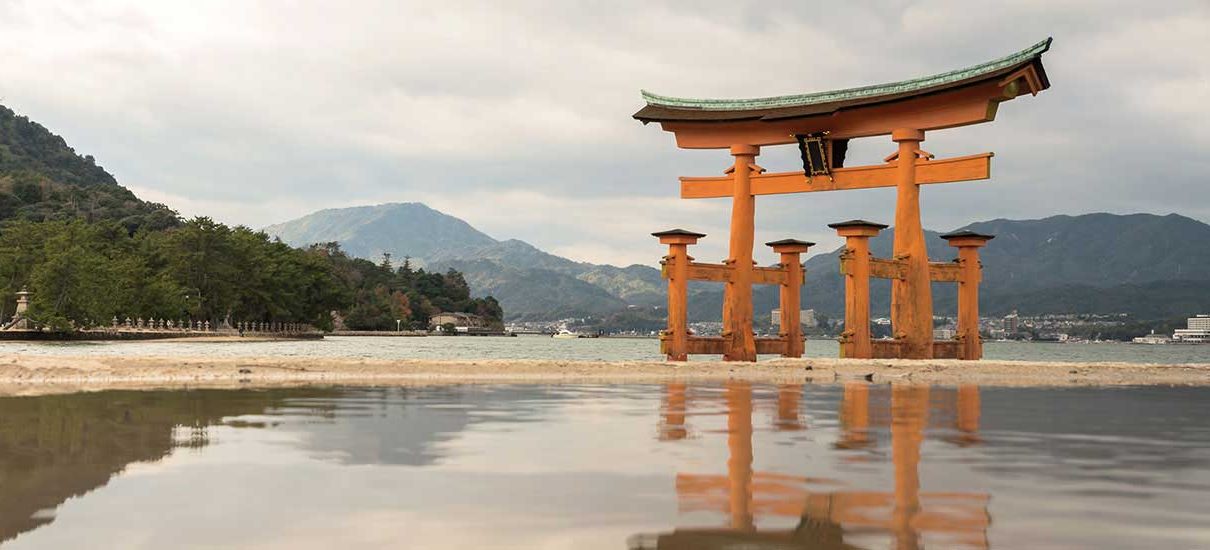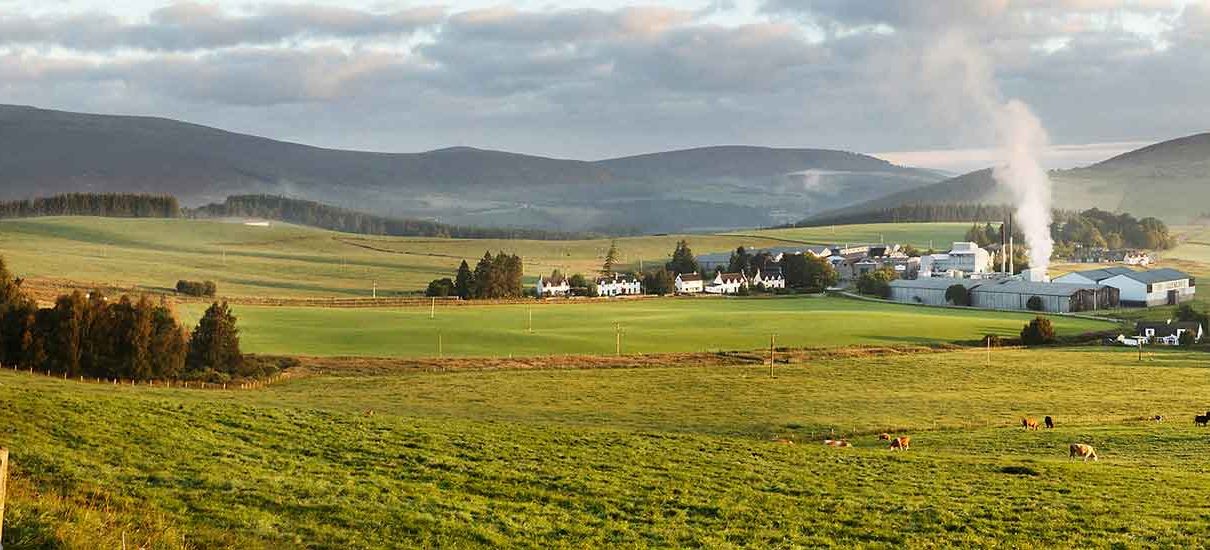
LET’S GO EXPLORING…
From The Glenlivet guide to whisky
Wondering about the different types of whisky that can be found around the world? Let us break them down for you.
Navigating the complicated world of whisky can be tricky. Whisky can be defined as the fermentation of grains, distillation, and maturation in oak casks, but this loose description leaves plenty of room for creativity. The varied types and flavours of whisky produced around the world attest to this. The whisky regions of Scotland are famous, of course, but whisky is also produced in more than 100 countries.
So, fasten your seat belts, and let’s take off on a whisky-trotting adventure across the globe to find out more about this much-loved drink.
DIFFERENT TYPES OF WHISKY
Whisky is a term used to describe a category of distilled spirit but under this umbrella, it can be further broken down into different types of whisky based on their geography and how they are produced. It can all get a little confusing so here’s a brief rundown.
Different types of whisky by country
Whisky can be made anywhere in the world, but some areas are known for their whisky production, with each country making whisky varieties with distinct properties and flavour profiles. Some of the most famous whisky-producing countries include:
Scotland: Scotland is famous the world over for its five whisky-producing regions and is the only country where Scotch whisky can be made.
Ireland: As with Scotch whisky, Irish whiskey can only be made on the island of Ireland. It was one of the earliest distilled drinks in Europe, spanning back to around the 12th century.
America: American whiskey can be made anywhere in the country but does include more specific varieties including Bourbon and Tennessee whiskey.
Canada: The majority of Canadian whiskies are blended, multi-grain varieties. They also tend to be lighter and smoother than other world whiskies.
Japan: Japanese whisky production began around 1870 but it wasn’t a commercial enterprise until 1923. It closely resembles Scotch whisky as Japanese whisky pioneers carefully studied the processes of Scottish distilleries. However, in 2024, Japanese whisky will conform to new regulations.
Different types of whisky by ingredients
Whisky can also be distinguished by the type of grain used in its production. Whisky can be made using a variety of grains including corn, rye, barley, and wheat, with many varieties using a blend of grains to create depth, texture and flavour.
Rye whisky: Rye whisky must be produced using a least 51% rye grain and be aged in charred, new oak barrels.
Bourbon: For a whisky to be considered a bourbon, it has to be made from at least 51% corn grain. It can be produced anywhere in the United States but is closely linked to the south, in particular, Kentucky.
Corn whisky: Perhaps not as well known as other types, corn whisky must be produced with at least 80% corn and is not required to be aged in wood. However, if matured, it must be done in either uncharred or previously used oak barrels.
Different types of whisky by blend
The flavours and characteristics of whisky are carefully crafted not only through the initial choice of ingredients but also by how the whiskies are produced. A whisky can be made from just one variety or a combination of varieties. This gives rise to different whisky types that distillers can use to describe their whiskies.
Single-malt: To be classified as a single-malt, a whisky needs to be distilled at a single distillery using a pot still process. It must also be made from a mash of malted barley.
Single-grain: As with single-malt, this type of whisky must be made at one distillery. However, single-grain whiskies don’t have to include malted barley and can be made from other grains including rye or corn.
Blended malt: Formerly known as vatted malt, blended malt whisky is made by mixing different single malt whiskies from two or more distilleries.
Blended grain: A combination of two or more single-grain whiskies from more than one distillery.
Whisky vs whiskey: What’s the difference?
To make things even more complex, you’ll often see ‘whisky’ and ‘whiskey’ used when talking about this spirit, just like how we have done above. Whilst the obvious difference between the two is the spelling, there are other factors that set ‘whisky’ and ‘whiskey’ apart.
They both describe a type of distilled alcohol made from grains and then matured in wood, but they can be differentiated by location.
The term ‘whiskey’ generally refers to spirits produced in the USA and Ireland. However, in Scotland, Japan and Canada, the term ‘whisky’ is the norm. There are exceptions to this, with some brands in the same country differing from one another in terms of whisky vs whiskey usage.
How the two variations came to be isn’t fully known. It has been suggested that they are both derived from uisge beatha, the original name for whisky which literally translates to ‘water of life’. It is believed that over time, this was shortened to just ‘uisge’ which sounds like ‘oosh-gae’ and that this then became ‘whisky’ and ‘whiskey’. Others hypothesise that whiskey is used in Ireland and America due to their links throughout history or that Irish distillers decided to change their spelling of the word to differentiate their spirit from Scottish versions.
IRISH WHISKEY
Ireland has made recognising whisky from different parts of the world a little easier by making its whiskey distinguishable through its spelling. Most whisky is spelt, like it is at The Glenlivet, without an ‘e’, but whiskey distilled in Ireland, and most whiskey from America, is spelt with an ‘e’.
More than just terminology is involved, however. The traditional style of Irish whiskey, called pot still, is triple distilled, rather than double distilled like it is for Scotch whisky. It is also made from both malted and unmalted barley. The fresh barley adds a light, delicate, fruity flavour, a characteristic Irish whiskey has now become largely synonymous with.
Ireland also produces malt Irish whiskey, which is made from only malted barley. Then there is grain whiskey, which is made from a cereal other than barley. It also creates blends, which typically combine whiskeys made from grain and barley.
Some of these whiskeys are double distilled and peaty, like some Scotch whiskies. With others, the grain is dried over a smokeless heat, giving a smoother finish which just goes to show it’s always difficult to generalise when it comes to where a whisky is produced and how it will taste.
AMERICAN WHISKEY
Knowing your grains is key to unravelling the complicated world of North American whiskies.
By law, American rye whiskey must be distilled from a mash of at least 51% rye, a grass grown extensively as a grain. Other ingredients in the mash are usually corn and malted barley. American rye whiskey is known for its fruity, spicy flavour. Some compare the taste to a whisky from Scotland’s Highland region.
American bourbon, on the other hand, is distilled from at least 51%, and not usually more than 80%, corn. Like most foodstuffs, whiskey evolved around local ingredients and customs, and corn made its way into American whiskey as it was readily available. By law (legislation was put in place to protect jobs in the lumber industry during the Great Depression) bourbon has to be matured in new American oak. The chemical vanillin, found in Quercus Alba, combined with the natural sweetness of corn, makes bourbon noticeably more sugary, floral, and perfumed. Whether the extra sugar makes its drinkers sweeter though remains up for debate.
CANADIAN WHISKY
Canadian whisky is often called rye whisky as historically, it was made from rye. There is no legal requirement to use rye, however, only that the liquor possesses the aroma, taste and character generally attributed to Canadian whisky. So contemporary Canadian whisky often actually contains very little rye – we did warn you it can get complicated – instead relying heavily on corn and wheat. These ingredients, plus maturation in American oak, means that Canadian whisky is, as a broad guide, sweet, spicy, and fruity.
“Un whisky The Glenlivet nature, s’il vous plaît.”
-ORDERING THE GLENLIVET IN FRENCH CANADIAN

JAPANESE WHISKY
Of all the varieties of whisky in the world, Japanese whisky is most closely related to Scotch. Whisky-making knowledge from Speyside and other regions was taken to Japan in the early 1920s, and whisky there is still mainly made from barley imported from Scotland. All of Japan’s distilleries are clustered on Japan’s main, central island of Honshu, except for one on the northernmost island of Hokkaido.
“ザ・グレンリベット一杯お願いします”
ORDERING THE GLENLIVET IN JAPANESE
While Scotch whisky has had hundreds of years to evolve, Japanese whisky has had only decades. The distilleries have managed, however, to develop their own styles quickly, mainly through innovation. The distilleries often use a variety of still shapes and sizes and experiment with using peated and unpeated barley, different yeast strains, fermentation processes and cut points. They also make use of a range of cask options, including the distinctive ‘mizunara’ or Japanese oak. This variety in production styles makes it hard to generalize, but the prolific use of first-fill casks has given Japanese whisky a tendency to be creamy and spicy.
SCOTCH WHISKY
Scotch whisky is protected by Geographical Indications (GI) status, so only a whisky made in Scotland can be a Scotch whisky. While Japanese whisky may have been styled on its Scottish progenitor, for example, it will never reach the lofty heights of being called Scotch.
“Out of all the 110-120 countries making whisky, Scotch is only made in Scotland.
This makes it the most aspirational drink in the world.
The only other drinks that have as much cachet are perhaps Champagne or Cognac.”
-IAN LOGAN, GLOBAL BRAND AMBASSADOR, THE GLENLIVET
The whisky produced in Scotland runs the full range of flavours, from heavily peated and smoky to light and fruity, and even slightly saline in coastal regions. There is almost always sweetness, either in full-blown caramel glory or just the slightest hint of sugar. The large number of Scotch distilleries makes it difficult, and unwise, to make broad generalisations.
What type of whisky is The Glenlivet?
All the whisky produced at The Glenlivet is pure single malt Scotch and more specifically, Speyside single malt Scotch whisky. Our distillery is near Ballindalloch in Moray, in the Speyside region and draws water from Josie’s Well and other nearby springs.
Types of single malts
As the definition of single malt is that the whisky only contains malted barley from a single distillery, wherever in the world that may be, Japanese whisky and Irish whiskey, as well as Scotch whiskey can be a single malt.
Single malt scotch whisky can be further defined by Scottish regions so you’ll find types labelled as Highland single malts, Islay single malts, Lowland single malts, Campbeltown single malts and Speyside single malts, just like The Glenlivet.
Types of Scotch
As with the broader term of whisky, Scotch whisky has different types depending on how it is produced. Varieties of Scotch whisky include single malt, single grain, blended malt, blended grain, blended, and double malt.
It’s a lifetime’s journey to learn and experience all there is to know about whisky. That’s why it’s best to return to the beginning, with a dram of The Glenlivet.
Explore and enjoy more of the flavours of the world with The Glenlivet’s whisky cocktail recipes, classic cocktails and our guide to cooking with whisky.
